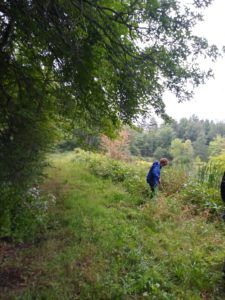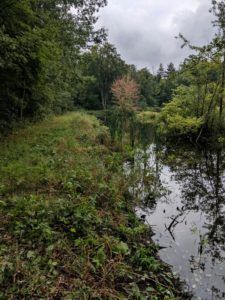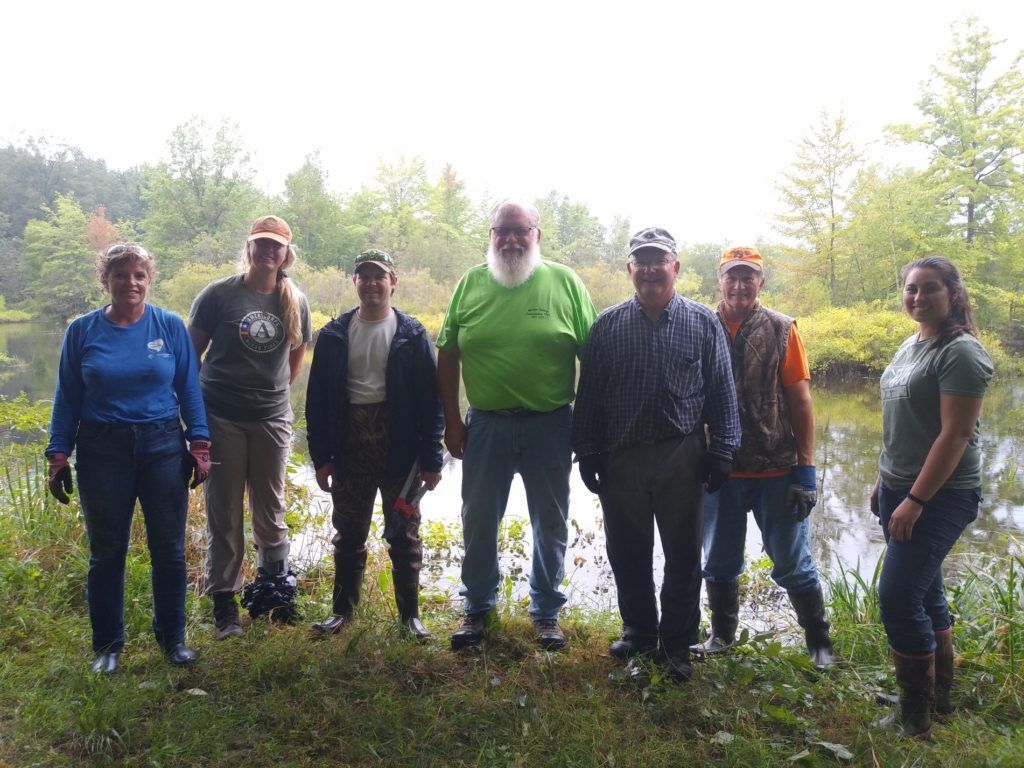OTG at Gratiot-Saginaw State Game Area
Volunteers braved inclement weather on Friday, September 6 to clear up the edges of a dike in the Gratiot-Saginaw State Game Area near Ashley. After meeting at the old DNR field office, volunteers made the short trek to the dike to begin clearing excess woody debris to improve water flow through the wetland.

 The primary vegetation impeding water flow through the area was common buttonbush, a native species that is known to be beneficial for wildlife habitat. It requires saturated soils and abundant sunlight, and it serves as foraging material for waterfowl and mammals alike. Despite its benefits, it had grown to a density and height that was becoming detrimental to water flow and user access and required management. Invasive autumn olive was also removed from portions of the dike edges.
The primary vegetation impeding water flow through the area was common buttonbush, a native species that is known to be beneficial for wildlife habitat. It requires saturated soils and abundant sunlight, and it serves as foraging material for waterfowl and mammals alike. Despite its benefits, it had grown to a density and height that was becoming detrimental to water flow and user access and required management. Invasive autumn olive was also removed from portions of the dike edges.
In order to combat the issue, volunteers used hand saws and loppers to remove the woody brush and stacked it off to the side. The dike was quickly transformed from a gnarled wall of woody brush to an accessible area that will continue to provide quality habitat for an abundance of waterfowl and furbearing species.
A huge thank you to the four volunteers who donated their Friday and braved the weather to make a difference for local wildlife habitat. Volunteers represented the Marion Springs Conservation Club, the Ruffed Grouse Society and Consumers Energy. Doug Reeves, former assistant chief of the DNR Wildlife Division and one of the founders of the MUCC On the Ground program, also came out to the state game area to volunteer for wildlife.

Thank you for another great OTG season. See you in 2020!
The post OTG at Gratiot-Saginaw State Game Area appeared first on Michigan United Conservation Clubs.



